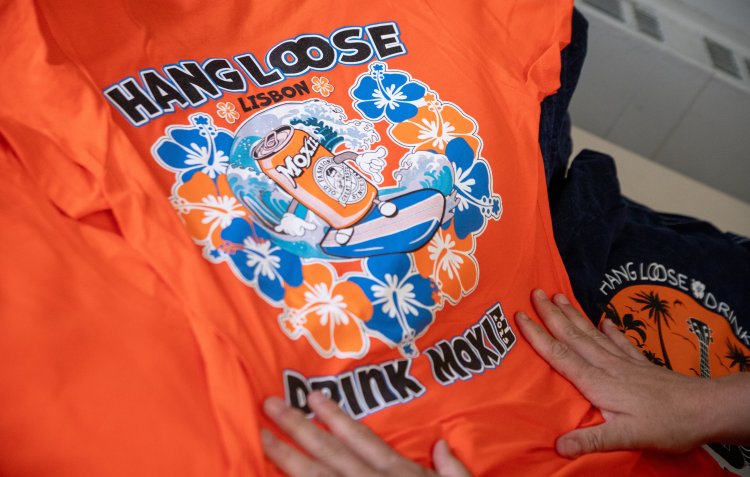
Moxie, beloved by some and hated by others, has a wacky and wonderful history. The beverage was created in 1876 by Maine-born Dr. Augustin Thompson in Lowell, Massachusetts, as Moxie Nerve Food — a cure-all tonic claiming to treat “brain and nervous exhaustion” and “imbecility and helplessness,” among other ailments. Made with gentian-root extract, its taste is distinctive – both bitter and sweet and something one often has to learn to enjoy.
In honor of the Moxie mania coming up this weekend in Lisbon, here are a few things you probably didn’t know about America’s oldest continuously produced pop.
The drink came before the word
The word “moxie,” meaning “courage,” “energy” or “perseverance” depending on the dictionary you’re using, originated with the carbonated beverage with an infamously bitter taste, according to Frank Potter’s book “The Moxie Mystique.” The word, which began as slang referencing the soda, became a household word as time wore on.
Potter writes, “the basic meaning (nervy) of the word was born when Dr. Augustin Thompson’s Moxie Nerve Food began to push its way past the palates of the populace. Thereafter, whenever anyone exhibited an uncommon amount of nerve, he was said to be ‘full of Moxie.’” There are several theories regarding the origin of the soda’s name, including links to an Abenaki word meaning “dark water” and to possible military friends of the inventor. However, the name’s definitive origins are unknown.

Moxie was more popular than Coca-Cola
In 1920, when Moxie was in its heyday, the beverage actually outsold Coca-Cola. Of course, the beverage predates America’s favorite soda by about 10 years; Coca-Cola was invented in 1886 while Moxie was first bottled in 1876. Nevertheless, some would say it’s hard to believe that a beverage with such a divisive taste could be so popular.

The Moxie Man was the product of a marketing master
Much of Moxie’s popularity and fandom can be attributed to its high advertising budget and marketing efforts that created countless novelty items and cultural phenomena around the soda. Advertising executive Frank M. Archer was the marketing genius behind much of Moxie’s commercial success, including the Moxie Man. The Moxie Man originally appeared on a poster, pointing and encouraging consumers to “Drink Moxie.” The highly effective poster resembles its successor, the “Uncle Sam Needs You!” posters of World War II.
Moxie was sold as a substitute for whiskey during Prohibition
One of Frank Archer’s marketing ploys involved pushing Moxie as a drink “For Safe Driving,” as the “horseless carriage” was becoming increasingly popular. Potter writes that drivers were “finding that they could no longer have one too many and trust the horse to get them safely home.” This created a niche for Moxie, whose strong taste worked as a sufficient pick-me-up that didn’t intoxicate its drinker before driving home.
There is a New England Moxie Congress — and you can join
According to its website, the New England Moxie Congress is a “loosely-knit band of Moxie zealots and fellow travelers who collect Moxie-related memorabilia, promote the drink’s availability, get together for parades and clambakes, and some who actually drink the stuff.” They produce a publication called “Nerve Food News” and have a yearly business meeting. The organization also collaborates with the Matthews Museum in Union, Maine, which has its own Moxie Museum wing.
Though the group is not affiliated with the Coca-Cola company, which owns Moxie, they wish to preserve the history of the beverage while also advocating for its availability and legacy. Anyone can join the Congress for a fee of $11-$16.
We invite you to add your comments. We encourage a thoughtful exchange of ideas and information on this website. By joining the conversation, you are agreeing to our commenting policy and terms of use. More information is found on our FAQs. You can modify your screen name here.
Comments are managed by our staff during regular business hours Monday through Friday as well as limited hours on Saturday and Sunday. Comments held for moderation outside of those hours may take longer to approve.
Join the Conversation
Please sign into your CentralMaine.com account to participate in conversations below. If you do not have an account, you can register or subscribe. Questions? Please see our FAQs.